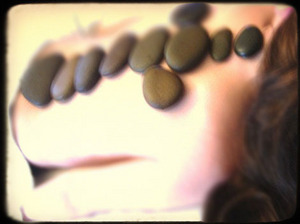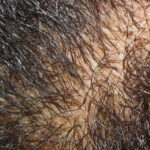Being a massage client is unlike any other mode of clientele. Not exactly a patient, and not simply a customer-you’re somewhere in between. It’s more involved than getting other body treatments such as a manicure, or your hair cut.
Because of this, being a massage client can be a source of anxiety and confusion. It doesn’t have to be. There are some basic manners and dynamics every massage client should know.
First, let’s take a look at the issue of boundaries. Because of the physical contact involved with massage, and intimacy normally associated with it, “boundaries” are big issues with both clients and massage therapists.
Boundaries
The sexual aspects and complications are obvious, and not the focus of this article. Simply stated, sexual contact, language, or actions are inappropriate within any therapeutic massage session. However, sexual aspects are not the only issue or boundary problem that is involved with touch.
Physical touch is associated with love, intimacy, safety, comfort, and parenting. Be aware of this dynamic. It’s easy to attach all manner of false attributes to a massage therapist. Although the therapist has a goal of relaxation and general healing, and perhaps even nurturing, she or he should not be placed in any role other than a professional-a massage therapist.
You might feel friendly toward your massage therapist, but she or he is not your “friend” or social acquaintance, proxy parent or child. Gestures like hugging, kissing, placement on personal email lists, questions about the therapist’s personal life, are all out of bounds. Handshakes, and appropriate verbal thank-yous and feedback suffice.
Because of the trust, physical touch, comfort, and privacy involved in massage sessions, clients often find themselves disclosing very personal information during sessions. Some talking is generally ok, and therapists usually allow or follow the client’s comfort level in talking-it is sometimes simply part of the relaxation and therapeutic process.
However, it is inappropriate to talk about private, troubling personal matters, ask for advice, disclose secrets, or gossip. It puts the therapist in an unwanted position-giving advice, having to find a professional way to respond, or keep secrets.
The therapist is not a sounding board either-venting about anything is best saved for friends or family. If you find the need to talk during a massage session , keep things light and as neutral as possible.
Also keep in mind absolutely anything of a sexual nature is out of bounds. Even just asking the therapist about possible bad experiences with inappropriate clients, jokes, or references are all off limits.
Payment and tipping
Many clients feel awkward paying a therapist, especially if there is no receptionist. There’s really nothing to feel awkward about. Aside from a general sense of discomfort, the most common issues seem to be about tipping, and price inquiries.
As a client, you should have been presented with the price before the session. If not, make sure you ask before receiving the bodywork, and arriving for your appointment. Likewise, ask about accepted methods of payment prior to arrival. It is awkward to have to run to the ATM machine to get cash, especially if your therapist is booked and unavailable when you return.
It is standard practice to tip the therapist. It is not required, of course, but if you feel so inclined, by all means, tip away. In my practice, I estimate that 90% of clients tipped. However, I was never offended or upset when clients did not tip. But keep in mind that therapists working in spas and chiropractic offices only take home a fraction of the massage price.
I had many clients not only ask me if tipping is appropriate, but ask how much they should tip. It’s an uncomfortable position. Simply tip what you think is appropriate, using the standard 15-20% tipping guideline.
Your Body
One’s body is sacred space. So, of course, there are going to be all kinds of issues when dealing with the type of physical exposure that goes along with massage.
Modesty and immodesty are huge dynamics with most clients. During the massage, a good therapist will maintain the minimum amount of bodily exposure as possible. If you are a naturally immodest person, this should not affect the normal undressing and redressing, or draping parameters set by the therapist.
It’s my experience that some clients use their immodesty to show trust, comfortability, or friendship with the therapist. Don’t do this. Likewise, don’t ask for less draping, or tell the therapist the sheets are unnecessary if it makes it easier. Although it isn’t your intention, these draping requests and inquiries are normally red flags-code words-used by people seeking non-therapeutic, sexual touch.
The modest draping is there for the therapist’s comfort and boundaries as well as the client’s. It is also the law, and therefore non-negotiable, in many states. Also, never undress or dress in front of the therapist. Wait until she or he has left the room or space.
If you are very modest, certainly tell the therapist. Bodyworkers have dealt with all levels of modesty, and can work with you and make all sorts of accommodations for your comfort. More modest draping, leaving items of clothing on, or other modalities are all options.
There are a couple other issues involving the body that must be mentioned-hygiene and apologies. Clearly, it’s polite and considerate to be clean upon arrival for a massage. I have had clients come to an appointment immediately after a workout, after gardening all day, walking around barefoot, and I will just say…other events.
Although squeaky-cleanness or a special pre-massage shower is not required or expected, neither are filth, dirt, sweat or any body fluids. It’s not just what you think it might be, like offensive odors or germs-it can actually interfere with the massage strokes, oils, and lotions. Likewise, lots of body lotion, dried or caked deodorant, body glitter, powder, or anything else should not be used prior to a massage.
Many clients are so self conscious and uncomfortable, that they constantly apologize about their weight, hair on arms or chest, lack of freshly shaved legs, tattoos, piercings, and a host of other things. This is unnecessary, and even a possible source of discomfort for the therapist, having to validate and reassure.
Experienced massage therapists have likely seen and worked on a wide array of body types, and apologies are unnecessary. Believe me when I say what you think is abnormal about your body is probably common and normal.
Clothing
The most common question I would get involving a modesty issue is. “Should I leave my underwear on, or do I have to remove them?” After a while, I would simply made the how-much-to-take-off issue part of the standard pre-massage instructions. I would explain that it was a matter of personal comfort, modesty, and choice, and would not affect the massage. I would also explain that the draping method covers all areas that underwear does.
I estimate that 50% of people, both men and women, choose to leave on their underwear. Removing bras is standard, though. Exposure is never a problem with the draping.
When removing your clothes for a massage, fold them and place them in the area indicated by the therapist. If nothing is mentioned, ask where they and anything else you have brought should go before the massage begins. It is uncomfortable, unsanitary, and inconvenient for a therapist to have to move your clothes, and shoes from the floor, or maneuver around obstacles on the floor, or on tables.
Terminology
One final thing is about terminology. Generally, massage therapists prefer to be called just that, “massage therapists” opposed to “masseuse” or “masseur.” These two terms are viewed as antiquated, and too informal.
A few other things that are particularly cringe-provoking are referring to the massage as a “back rub,” “body rub,” “rubdown,” or a “back scratch.” Massages are referred to simply as sessions, massages, and/or bodywork.
That’s it! Hopefully the common scenarios and dynamics addressed in this article will demystify the manners surrounding the massage experience and let you enjoy your experience with confidence.






